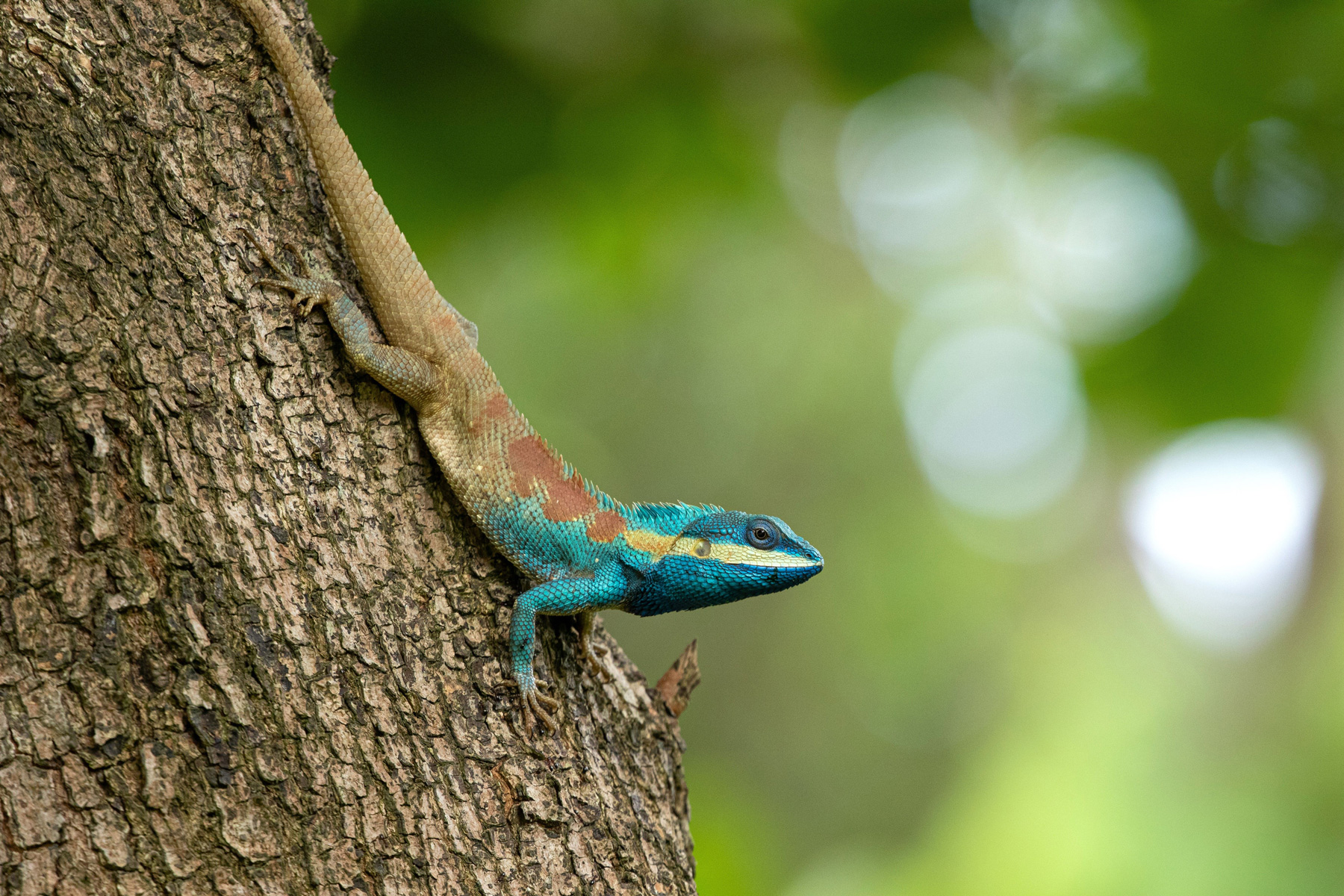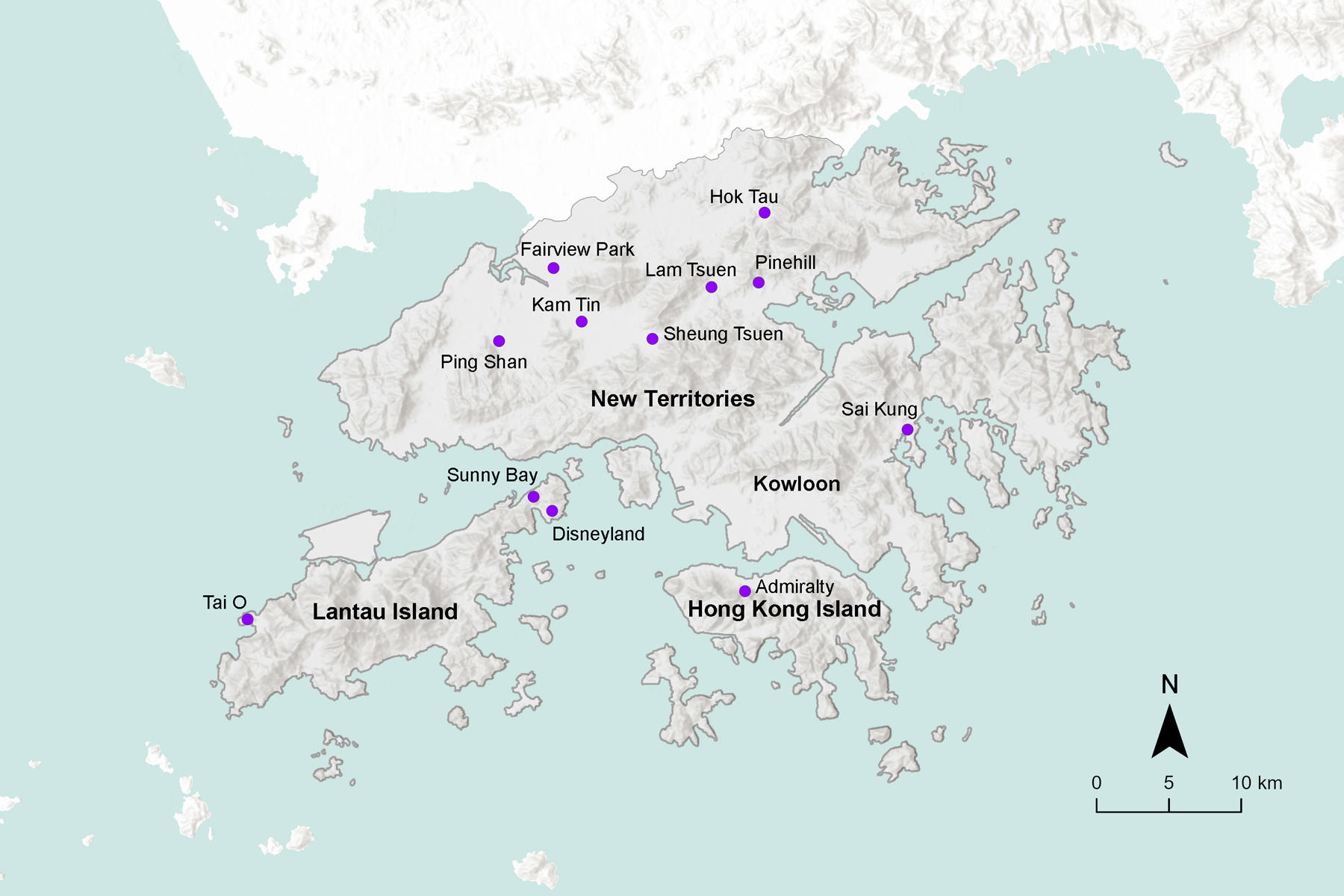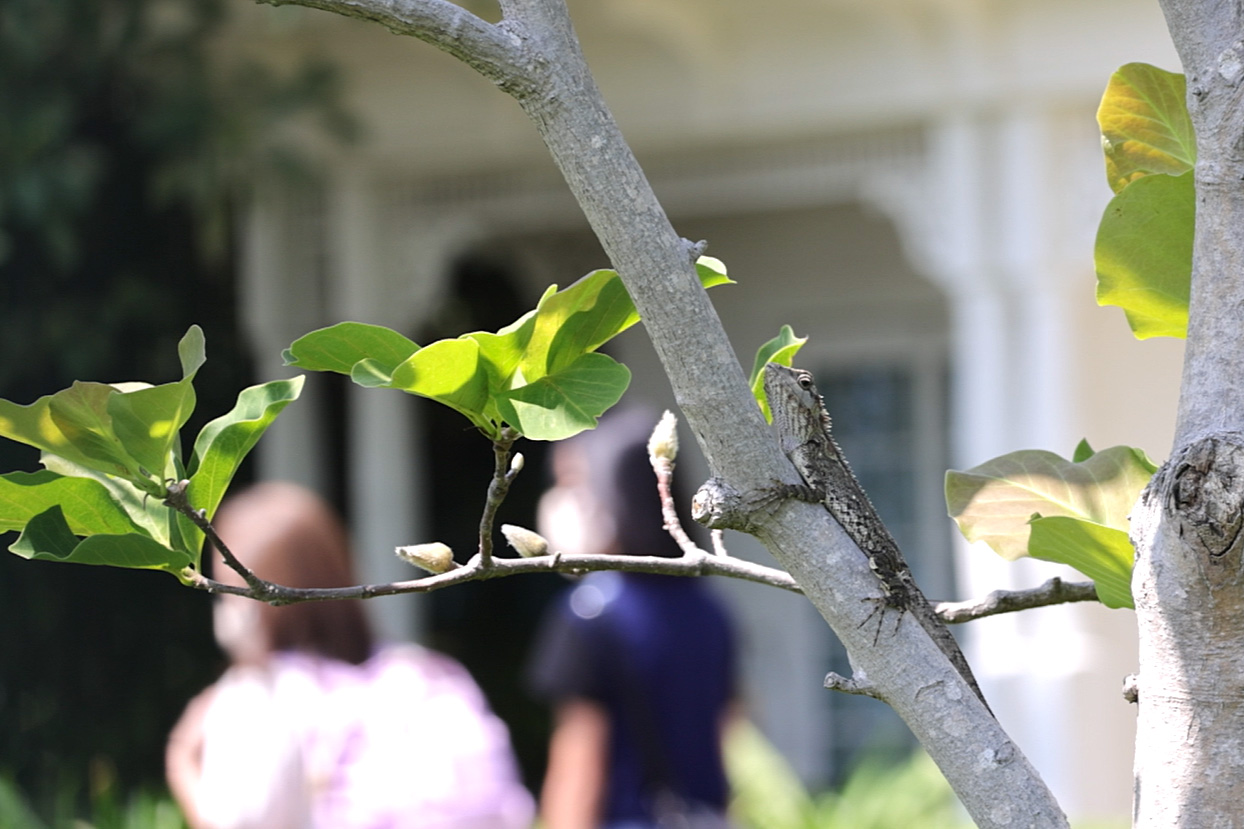Beautiful But Invasive: Colonisation of the Introduced Blue-crested Lizard in Hong Kong

The Blue-crested Lizard is named for the striking blue colouration on its head and anterior body, as well as the distinctive white stripe on its upper lip.
High-resolution images, please download from: https://s.kfbg.org/Jjovgv
(Hong Kong – 23 JUNE 2025) The Blue-crested Lizard (Calotes mystaceus), an introduced species in Hong Kong, is highly notable for the striking blue colouration on its head and anterior body during the breeding season. Native to mainland Southeast Asia, this species was introduced to Hong Kong in the early 2000s, with the first known observation occurring at Disneyland on Lantau Island. Since then, it has successfully established a breeding colony at the location. Recently, researchers from Kadoorie Farm and Botanic Garden (KFBG) have discovered several scattered breeding populations across various distant districts in Hong Kong, including Sheung Tsuen, Sai Kung, Pinehill, Ping Shan, Kam Tin, Hok Tau and Lam Tsuen. Occasional occurrence records have also been reported from Fairview Park, Tai O and Admiralty. The species is highly adaptable and can thrive in urbanised environments, with established populations in Hong Kong mainly found in areas of high human activity such as urban parkland, roadside green spaces and courtyards.
Where did they come from?

To uncover the geographic origin and potential introduction pathways, KFBG’s researchers have conducted genetic analysis on 33 samples from eight different locations in Hong Kong. Recently, the study results have been published in the international journal BioInvasions Records. The study revealed that all eight populations from Hong Kong showed no genetic divergence and shared the same geographic origin, specifically a population from Doi Saket district, Chiang Mai, in northern Thailand. Given that these populations locate in urban gardens and greenery areas and are scattered across the territory, researchers believe they were introduced to Hong Kong through imported ornamental plants.

Since only a single common haplotype (a grouping of genomic variants) was identified among all analysed populations in Hong Kong, KFBG’s researchers therefore believe that the ornamental plants supplied to these locations might directly or indirectly come from the same plant supplier. There is a concern that future plant-supplying activities from this nursery may lead to further introduction events of C. mystaceus into the territory. Therefore, a comprehensive investigation into the presence of exotic invasive species in Hong Kong’s plant nurseries is essential to gain more insights into this issue and propose relevant actions to prevent further release of invasive species.
Potential Impacts on local biodiversity
To date, there are several well-established Blue-crested Lizard populations across Hong Kong. Our preliminary study indicated that the population at Disneyland, also the first known population in Hong Kong, is likely the largest in Hong Kong. Over 300 individuals were recorded during a two-hour search covering 1.4 km². Although established populations are mostly located in urban parks and greenery areas, KFBG’s researchers found that the Sai Kung population has already expanded into adjacent natural forest areas in Ma On Shan Country Park and Tsiu Hang Special Area, the latter being a special conservation area for biodiversity conservation in Hong Kong. This raises concerns that this exotic species could gradually expand its range within Hong Kong if no preventive actions are taken.
Introduced species are recognised as direct drivers of biodiversity loss globally. Documented cases show that introduced arboreal lizards can negatively impact native biota, particularly native insects and invertebrates. Calotes species are known to be generally opportunistic predators, and the Blue-crested Lizard being more agile and large-sized, may have a much broader diet compared to the native, smaller Changeable Lizard (C. versicolor). During the survey, KFBG’s researchers observed a Blue-crested Lizard preying on a nestling of Swinhoe's White-eye (Zosterops simplex) at Disneyland, representing the first record of avivorous behaviour of this species. This suggests that this medium-sized lizard could prey on native birds, particularly nestlings and fledglings of small-sized species nesting in trees.

Furthermore, there is significant concern regarding the direct competition with the only native agamid, the Changeable Lizard, which occupies a similar ecological niche to Blue-crested Lizard. During the field survey, KFBG’s researchers have observed instances where a Blue-crested Lizard chased the smaller native Changeable Lizard from its tree site, possibly taking over the locality. In some breeding colonies, researchers suspect the establishment of Blue-crested Lizard populations has already started to displace the native Changeable Lizard. In view of the larger body size and aggressive behaviour of the Blue-crested Lizard, researchers believe this exotic species could suppress and largely displace the native Changeable Lizard in the future.

What can we do?
The frequent and multiple introductory events involving C. mystaceus in Hong Kong over the past two decades indicate that loopholes might exist in current imported ornamental plant screening and quarantine systems. Currently, plants produced in and imported from mainland China to Hong Kong are exempted from a Plant Import Licence or Phytosanitary Certificate, which may be a potential loophole for the introduction of exotic species through horticultural imports. KFBG therefore recommends that the local authorities review the current quarantine procedures for imported horticultural plants and take prompt actions to resolve any weaknesses in the existing screening of imports. Enhanced screening, particularly for biota attached to ornamental plants and in soil, is crucial. In addition, a systematic Hong Kong-wide survey or regular monitoring of ornamental plant nurseries may significantly improve early detection of unwanted exotic species imported into the Hong Kong SAR.

The study result has been published in the international scientific journal BioInvasions Records. For further reading:
Yeung H.Y. & Yang J-H. (2025) “Sourcing the geographic origin of the introduced Blue-crested lizard Calotes mystaceus Duméril & Bibron, 1837 (Squamata: Agamidae) in Hong Kong” BioInvasions Records 14
LINK: https://www.reabic.net/journals/bir/2025/2/BIR_2025_Yeung_Yang.pdf

